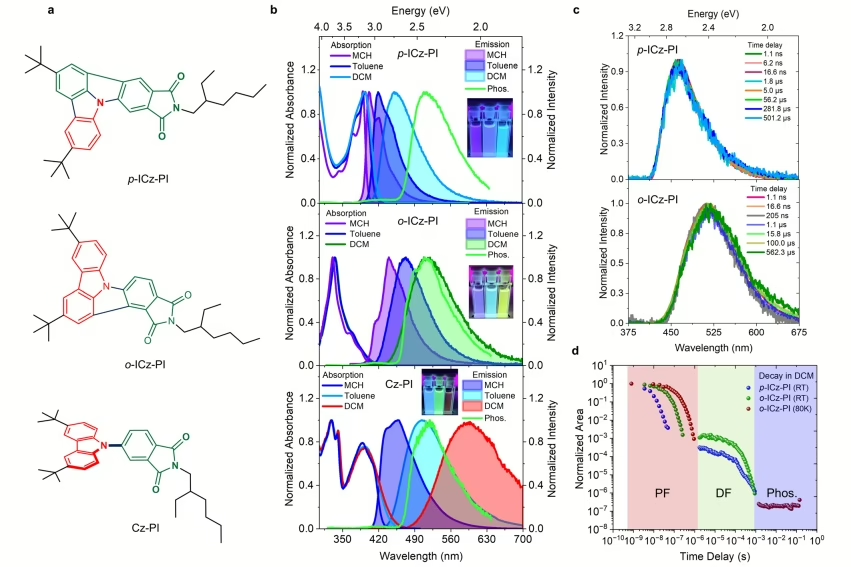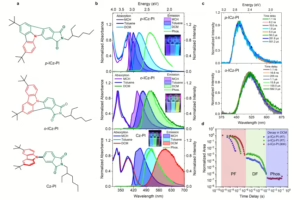The pursuit of efficient and stable organic light-emitting diodes (OLEDs) has taken an innovative turn with a new study that challenges the conventional wisdom of using twisted donor-acceptor (D-A) geometries in thermally activated delayed fluorescence (TADF) emitters and introduces rigid, planar designs that could redefine the field.
The crux of the study lies in the development of fully planar, π-conjugated molecules—specifically fused indolocarbazole-phthalimide derivatives—that exhibit robust intramolecular charge-transfer (ICT) states while maintaining high photoluminescence efficiency. Unlike traditional TADF materials, which rely on twisted geometries to minimize singlet-triplet energy gaps, the researchers demonstrate that planar structures can achieve similar, if not superior, results. These rigid molecules exhibit a minimal singlet-triplet energy gap (<50 meV), enabling effective triplet harvesting and prolonged operational stability—an Achilles’ heel for many current OLED designs.

(b) Absorption and emission spectra in various solvents, with color changes under UV light indicating solvent polarity effects.
(c) Time-resolved emission spectra and (d) decay profiles in degassed dichloromethane, showing regions of prompt fluorescence, delayed fluorescence, and phosphorescence. Delayed fluorescence is quenched at 80 K, highlighting the thermally activated nature of emission. (Source: Nature)
This breakthrough is particularly promising for blue and green OLED applications, which demand high color purity and stability. By addressing the degradation associated with flexible tertiary N-C bonds in twisted D-A molecules, the planar approach not only enhances stability but also simplifies the molecular design. This could pave the way for more sustainable and durable OLEDs in consumer electronics, lighting, and beyond.
The implications extend far beyond OLEDs. The long-lived ICT states and the stable delayed fluorescence observed in these materials also make them compelling candidates for applications in bio-imaging and photocatalysis. Their ability to operate efficiently in both polar and non-polar environments suggests versatility across various scientific and industrial domains.
Reference
Kuila, S., Miranda-Salinas, H., Eng, J. et al. Rigid and planar π-conjugated molecules leading to long-lived intramolecular charge-transfer states exhibiting thermally activated delayed fluorescence. Nat Commun 15, 9611 (2024). https://doi.org/10.1038/s41467-024-53740-1

